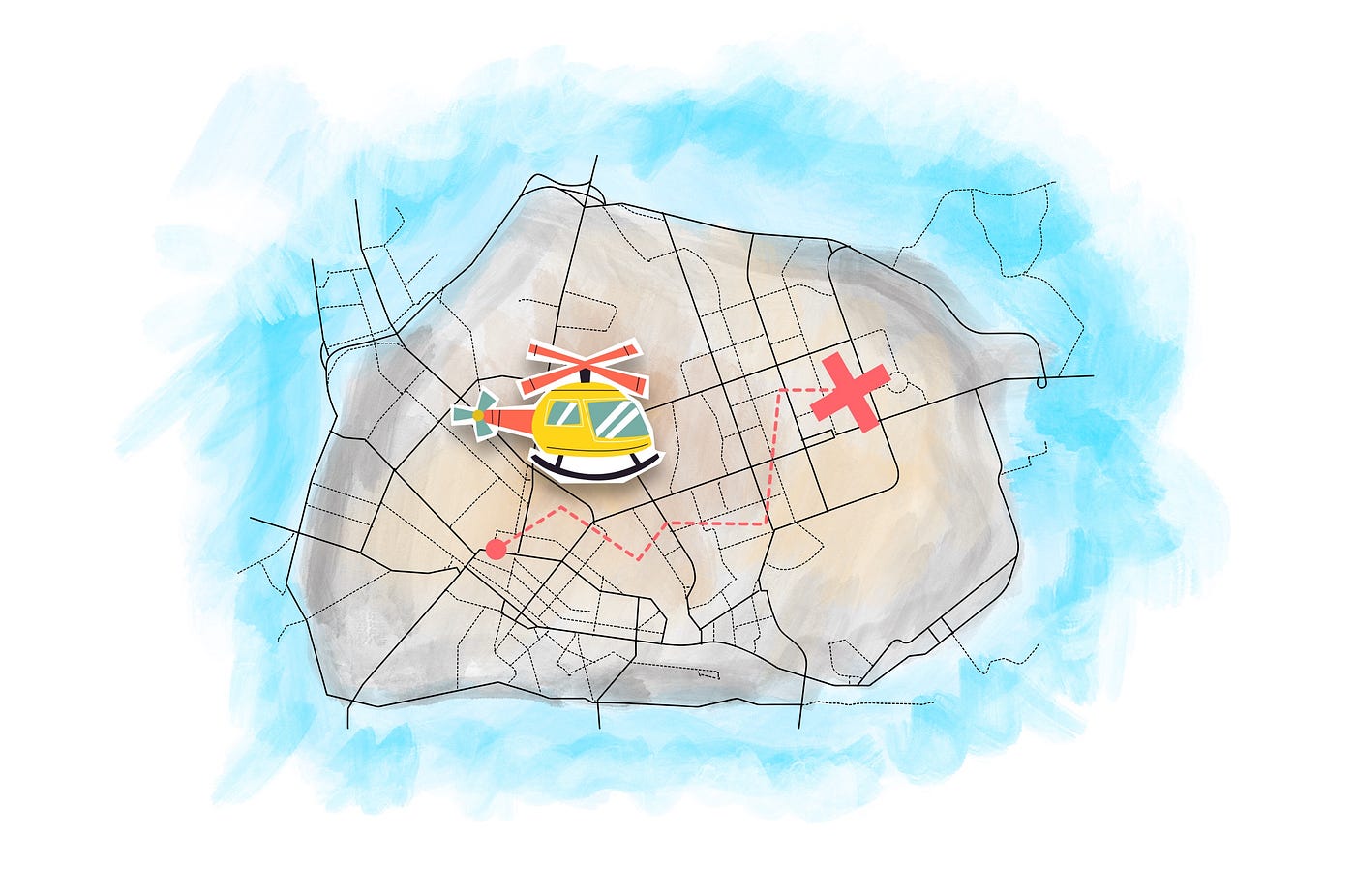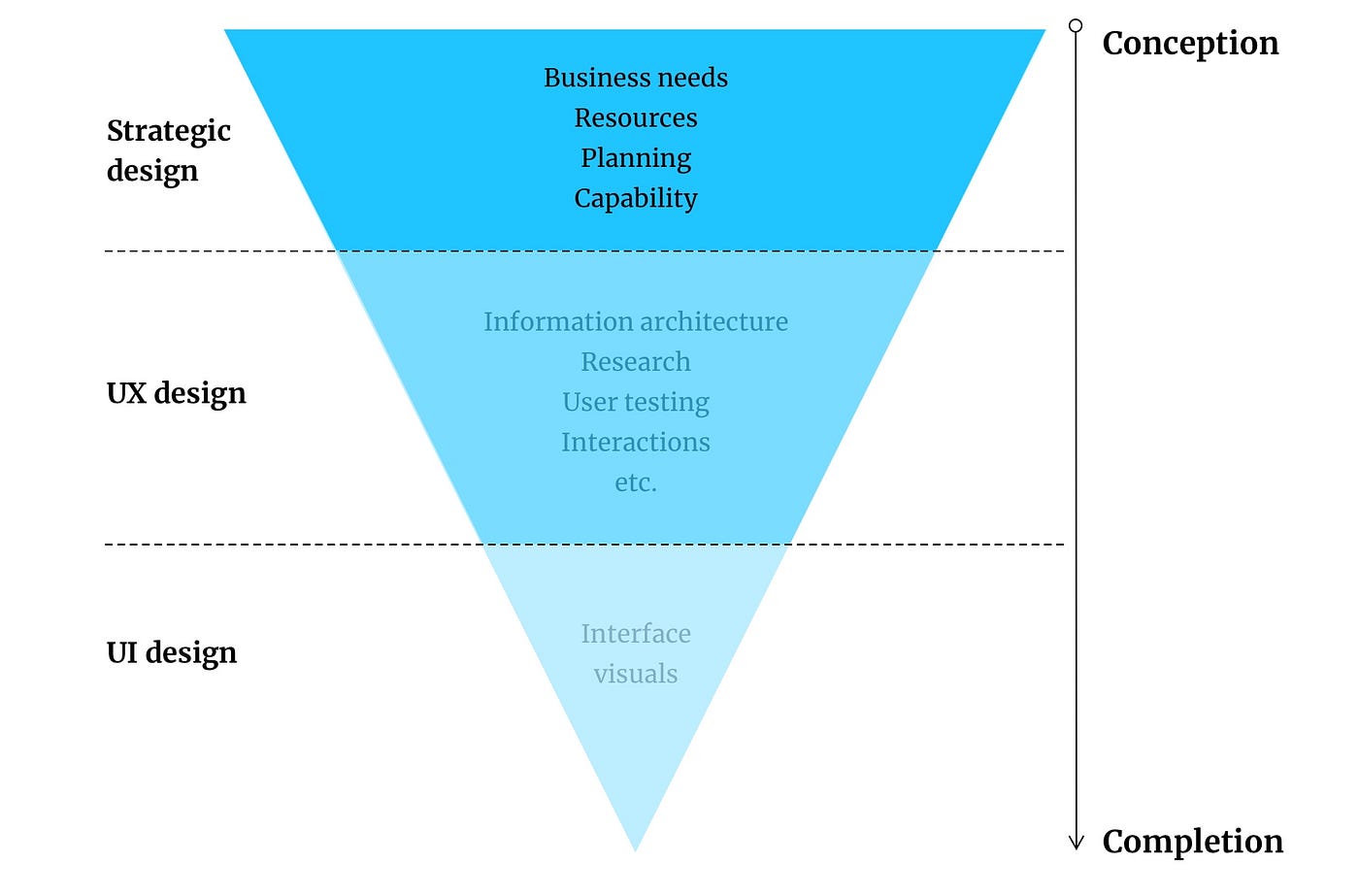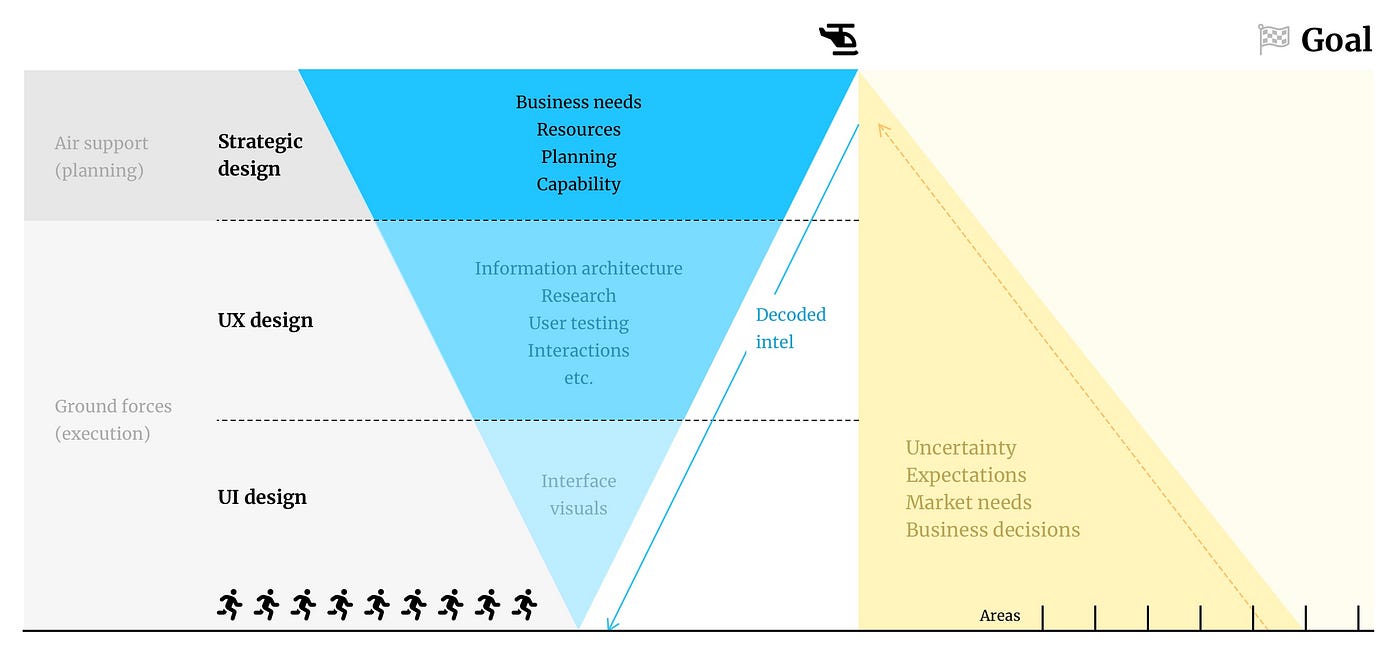Adopting this mindset helps to acknowledge in a better way design problems.

As an old and bad habit, one of the most common mistakes designers make is rushing to have a final solution as an immediate response to any request. Although this reaction may be good (questionable) because it allows us to visualize a final shape of an experience in a short time, the truth is we often miss a significant portion of information to understand the dimension of a problem and fully develop a functional product design.
In my experience with this “approach,” I’ve learned that rushing to solutions too early may result in reprocesses, wasted time, and, most importantly, money loss. But, conversely, blocking solutions is not a good strategy either. So I asked myself this question; how to adequately cover all fronts when understanding a design challenge and still be agile?
Let’s start from the basics. We know the stages of execution of product design (bottom to top); the frontstage design (UI), which focuses on interfaces, and interactions directly related to users, and then we have the backstage design (UX), which focuses on understanding and measuring user behavior, among other actions.

But there is, for me, an additional layer of creation in this structure; the strategic design whose mission is first to understand the business needs and then look down on the problems and get the actual dimension of the challenges to guide a team properly.
The reverse funnel of design (top to bottom)
In my opinion, how we understand layers of design is backward. Let me explain; Most of the time, we tackle problems and challenges from a general perspective, understanding the possible impacts, actions, and extensions (top of the structure). In this part, we first can construct initial concepts or judgments of how to proceed, prioritize steps, and project it into a timeline. We are looking from a top perspective at the problem before proceeding (this is also how humans learn). After that, we dive into specific things solving one part at a time (bottom).

A quick example of this idea; Once you have decided to organize your room, you first analyze the magnitude of the challenge: how big is the room? Do I need extra help? Do I have time to accomplish the task or the necessary equipment? Then, after all that mental process, you decide where to start by taking one step at a time.
The same happens with product design; the first action shouldn’t be the solution itself as the bad habit of some designers. That can be a mistake. Instead, we need to start looking down on challenges (strategic design) to understand how big it is, estimate the resources, determine the actual dimension and consequences of things, and prioritize efforts to move forward.
But what happens when the business requires to rush into solutions? How to move even knowing this isn’t the proper approach? In start-up companies, fast resolution thinking is vital, but I think it should be a balance of activities when facing these problems. Delivering as fast as we can is not a good long-term strategy, but on the other hand, slowing things down is neither a good idea for the business. So what to do in this case?
The “helicopter approach.”
I faced this situation, and I came up with this idea that I called: “the helicopter approach.” What is? It is a simple action plan where the team can move into two design activity levels. Above, the air support or the helicopter refers to the UX manager seeing everything, understanding, and connecting dots to plan the next move; and below and at the same time, the ground forces: the UX team executing all priorities in a given time.
In this approach, teamwork is essential, but a significant percentage of success depends on the manager’s ability to provide intel to the team and plan in real time. This time the manager is not behind the team in providing support; instead is above, interpreting information and building an execution path.

Ok, now that we can move and cover a design challenge simultaneously, the next question I made was: is it possible to adopt this approach as a constant way of working? What potential benefit has watching problems from above on daily basis situations? And beyond benefits, are new problems we usually miss when we only focus on the ground forces?
The findings were fascinating; like everything, there are good and bad things. Here are some thoughts:
1. Worlds within a world
Issue: As soon you start “flying” over projects, whether a rush task or a long-term challenge, you will realize that, as on any city map, you can find different sources of information. Naturally, this phenomenon happens in all companies. Still, to make a solid move for your team, you need to articulate several ideas and discussions in one source of truth to plan a long-term strategy and reduce uncertainty eventually.
Benefit: You can become the enabler of multiple conversations and be the core of a project. Though it might mean more work, ownership and knowledge eventually are the ultimate power to build a successful experience solution.
2. Different expectations about the same result
Issue: Imagine a large country with several towns with a unique language and culture. They will have various answers if you gather them all and ask the same question. Moving forward in the project having little pieces of truth spread all over the team will carry you burnout, miss planning, and reprocesses due to a dangerous interpretation of the problem according to each individual, not based on common ground.
Benefit: If you can gather all expectations into a shared destiny, your design solution wouldn’t have flaws because it will fulfill all needs with no room for subjectivity or miss alignments.
3. Managing the parts
Issue: It is not a good idea to tackle everything simultaneously; It can be messy, and the percentage of missing something crucial for the solution is enormous. Moving ahead this way will increase fatigue among collaborators.
Benefit: Breaking problems into small parts or experiences will focus your team on specific goals, avoiding overthinking and uncertainty in the long term. Planning is more focused on particular issues avoiding disorders or distractions.
4. Projecting goals.
It is good to see everything from above and make estimations, but how to take it as a projection?
Issue: If we don’t use the proper artifact to plan, follow and gather all parts, we may discard all the progress we made before. I’ve seen all types of roadmaps serving several functions; I don’t know if this is good; the way I see it, a roadmap should only fulfill the mission of planning based on primary company/team needs.
Benefit: In roadmaps, seeing problems from above also works. Creating a general view of what you want to accomplish before having an extensive list of tasks no one understands helps a lot; you will provide an immediate understanding of the rules of engagement and the path to follow.
Here are some quick roadmaps tips that worked for me. Before creating tasks, I recommend thinking about the following questions:
- Do we want a list of tasks? Or a business projection?
- What should be the next move for the company/product?
- What is the most relevant thing to accomplish?
- Who should be involved?
- Do we expect a time to deliver?
- Wich portion of the main goals is feasible in a given time?
A final thought:
Seeing problems from above expands our vision of how to understand and enjoy our profession. As previously mentioned, UX design is not far from human nature and common sense. Sometimes it is good to remember that some simple approaches may help us to unlock a fantastic potential.
Learning and adopting this approach helped me to own the parts and acknowledge in a better way all the problems that I have missed because of being focused on actions or solutions before asking first for the actual dimensions of the challenge.
#ShortStoriesOfMyLifeAsDesigner